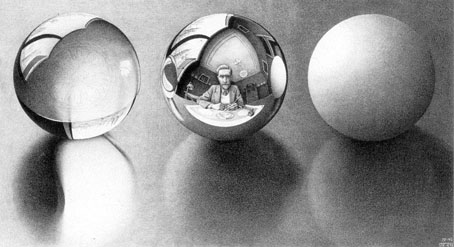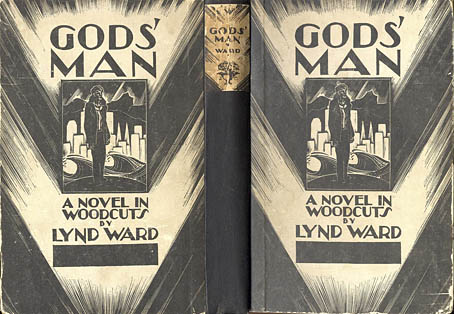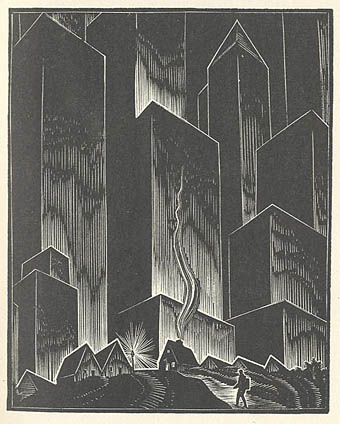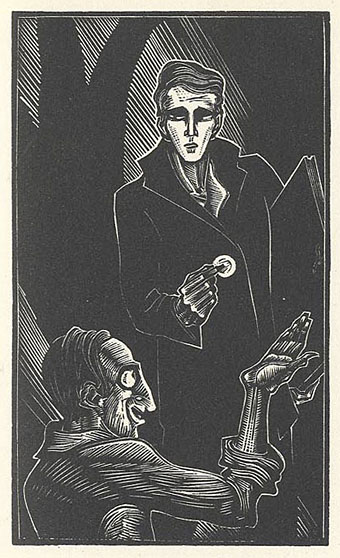Three Spheres II (1946) by MC Escher.
Celebrating the third { feuilleton } anniversary and post number 1,438. It’s become customary now to list the most popular posts of the past year so here we go again:
• The Underwater Sculpture Gallery. This has been surprisingly popular for several months now, despite pictures of the artworks in question having been featured on very popular sites such as Boing Boing. Typing “underwater” into Google’s image search provides the answer, revealing that one of the pictures from the post is on the first results page.
• The gay artists archive. This section has also leapt in popularity after the page was linked recently on StumbleUpon. It’s not a definitive archive by any means, plenty of other sites are attempting that already. These archive pages are only a convenience so that people following some of the lengthier visual categories can see at a glance what else is there. At its best this section may introduce people to more recent work which the historical sites omit.
• Barney Bubbles: artist and designer. No surprise that this is still popular two years on.
• Bare blade. Part of the new semi-serious Men with swords obsession. I think people like this guy’s bum more than anything. Can you blame them?
• Two guys kissing. Yes, Googlers, when you search for “Two guys kissing” you get this wonderfully sexy photo by Jack Slomovits. He’s great, buy his book.
Thanks for reading!
John x





